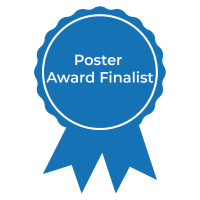Imaging Posters
Poster: Imaging Posters
40 - Sorting Signal from Noise: Simulating 3D Morphology with SlicerMorph and Advanced Normalization Tools (ANTs)
Sunday, March 24, 2024
5:00pm - 7:00pm US EDT
Location: Sheraton Hall
Poster Board Number: 40
There are separate poster presentation times for odd and even posters.
Odd poster #s – first hour
Even poster #s – second hour
Co-authors:
There are separate poster presentation times for odd and even posters.
Odd poster #s – first hour
Even poster #s – second hour
Co-authors:
Sophie Whikehart - Center for Developmental Biology and Regenerative Medicine - Seattle Children's Research Institute; Sara Rolfe, Ph.D. - Center for Developmental Biology and Regenerative Medicine - Seattle Children's Research Institute; A. Murat Maga, Ph.D. - Pediatrics & Center for Developmental Biology and Regenerative Medicine - University of Washington & Seattle Children's Research Institute
- RR
Rachel A. Roston, Ph.D
Postdoctoral Fellow
Seattle Children's Research Institute
Seattle, Washington, United States
Presenting Author(s)
Abstract Body : Innovations in anatomical visualization and morphometrics are creating new opportunities for phenotype discovery in reverse genetic screens. Computational anatomy (CA) approaches allow the automation of high-throughput phenotype discovery pipelines and support the identification of more subtle phenotypes and phenotypes occurring at earlier developmental stages than traditional approaches. Determining whether results reflect real biological variation or other confounding factors is an important step in validating CA pipelines, but can be challenging in new datasets, without previous results. In such cases, introducing controlled anatomical variations into an analysis can help distinguish between real phenotypic differences and random variation, elucidate the effects of sample size, and test the sensitivity and reproducibility of morphometric analyses. We have developed a novel approach to simulate morphological variation using real-life diceCT scans of wildtype (WT) mouse embryos from the International Mouse Phenotyping Consortium database and open-source tools in 3D Slicer, SlicerMorph, and ANTs. First, we generated experimental transforms using the published E15.5 mouse fetus atlas (Wong et al. 2012). We then transformed 30 WT diceCT scans (subjects) into atlas space, applied the experimental transform, and returned them to subject space to generate simulated morphological data. This allowed us to produce a new sample dataset with a controlled average population-level change while maintaining individual variability because each sample deformed more or less based on how different it was from the atlas. We then used these simulated morphologies to test whether our analytical pipeline can pick up the introduced signal. Our results demonstrated that our phenotype discovery pipeline recovers introduced morphological differences with certain limitations. The results also showed that increasing sample size and limiting analyses to specific body regions, as opposed to the whole organism, can improve the power of the analysis to detect subtle phenotypes, or weaker signals. The ability to generate known 3D morphological variation has broad applicability in developmental, evolutionary, and biomedical morphometrics; without this type of simulation analysis, it may not be possible to distinguish between a failure to detect morphological difference and a true lack of morphological difference. This type of simulation can also be applied to AI-based supervised learning to augment dataset limitations.


